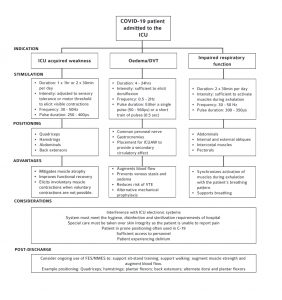
Electrical stimulation of the peroneal nerve for increased blood flow to the lower limb (posed with a mannequin).
Professor Ian Swain, Associate Professor Tom Wainwright and Louise Burgess have been working with an international group of experts to investigate the role of neuromuscular electrical stimulation (NMES) to improve the recovery of critically ill Covid-19 patients admitted to the intensive care unit.
Their narrative review, published last week in the Journal of Rehabilitation Medicine, highlights the role of NMES for weaning patients off ventilators, reducing muscle atrophy and preventing thrombotic complications.
NMES has long been an area of research for ORI, and the opportunity to apply this expertise at a time where innovations are needed was welcomed. At the start of the first lockdown, with most existing research on hold, the team were conscious of doing everything they could to help overcome the severe problems raised by the Covid-19 pandemic. Professor Ian Swain had been working with the National Institute for Health and Care Excellence (NICE) developing guidelines on the use of NMES for people with heart failure and chronic obstructive pulmonary disease. It therefore occurred to him that such techniques could be equally applicable to people with, and recovering from, Covid-19.
The review examines the evidence, current guidelines, and proposed benefits of using NMES with patients admitted to the intensive care unit.
Practical recommendations for using electrical muscle stimulation with Covid-19 patients are provided and suggestions for further research are proposed.
Their article can be accessed here.



